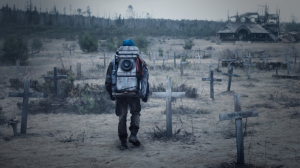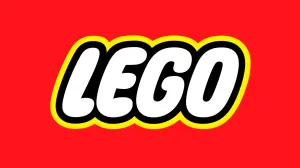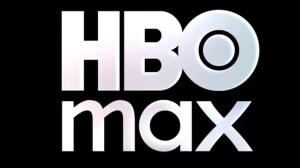Earlier this year, Escape Room delivered audiences a thrilling exploration of a group of individuals who wanted to put their puzzle-solving skills to the test, only to learn that the adventure featured deadly consequences if the codes couldn’t be cracked. The film landed in theaters in January, which is traditionally a difficult month for films to become hits, the film went on to become a surprising success, taking in more than $115 million on a budget of $10 million. Fans of the film were delighted to learn that the film would be getting a sequel, with director Adam Robitel returning to helm.
Videos by ComicBook.com
With Escape Room now on home video, ComicBook.com caught up with the filmmaker to discuss his involvement in the film, the difficulties of delivering audiences a tamer experience than R-rated competitors, and if he sees more franchises in his future.
Escape Room is out now on Blu-ray, DVD, and Digital HD, with the sequel slated to land in theaters on April 17, 2020.

ComicBook.com: With escape rooms becoming more popular around the world, the concept of the film intrigued audiences who were curious about those experiences. What sort of research into actual escape rooms did you do before making the film?
Adam Robitel: Well, I must admit, I admitted in previous interviews, I didn’t even know what an escape room was when I first read the script. This was two years ago. I felt like an old fuddy-duddy. I don’t really go out of the house too much. But I quickly went out and did a bunch of research and probably went to 15 rooms locally in L.A. There’s like 500 alone in L.A. County. I quickly realized how visual and cinematic the good ones are and how art-directed they are and how much love and care goes into the design of a room. So I got really excited about what it meant for a visual medium and the idea of a puzzle maker almost being like the Jony Ive of Apple. Somebody who … Yes, [is] killing people, but in a way that’s very artful and, almost, there’s a passion.
So I got excited about all of those things. And then, also, I think ultimately because the mandate was to make it a PG-13 movie, the constraints of not relying on gore but relying on the beauty of the rooms. So we really felt like leaning into each room being its own unique, almost like a little mini-movie. And the rooms in L.A. are really creative. You go into one room where I remember you solve a riddle and a black light turns on that reveals the hidden map behind you on the wall. What’s really interesting is that the rooms themselves change as the players interact with them and stuff. It’s almost like a living, breathing thing.
But I was also adamant that for a movie to exist you have to do stuff that you couldn’t experience in an actual escape room. You had to push the boundaries a little bit. For the second movie we’ve done more research and some people go who have not been to an escape room and they expect to go in and get cooked alive. They’re all scared. So it’s this weird art imitating life imitating art kind of thing.
Since the premise of the movie relies specifically on contained locations, was the concept always to plant the seed for a franchise to emerge, despite those inherent difficulties of raising stakes?
I didn’t want to be arrogant to think … it had all of the ingredients of a potential franchise and so, I will admit, I wouldn’t be honest if I said we weren’t hoping that that was the case. It’s a Ten Little Indians movie so it’s really borrowing from like … going way back to Agatha Christie and stuff. At the end of the day, it is about strangers in a room getting killed. There’s a formula that can work. But you gotta work twice as hard each movie to reinvent the wheel but you also have to be mindful of giving the audience what they really liked about the first movie.
It’s a tricky rope to walk, for sure. As you said, we did fire, we did ice, we did gravity, we did gas, so coming up with other ways to slice and dice the players is tricky because the last thing we want to do with the franchise is to rely on reverse bear traps and so forth. That was done so well with Saw and that’s not our franchise. So yeah, it is challenging, but if there’s a will, there’s a way. I can’t talk too much about it, but I think we have a cool way into the sequel that I think will be exciting and expands Minos mythology a little bit without going too far. We’ll see, it is tricky.
You mentioned the mandate that the film be PG-13, did you ever find that a hindrance to the film? Were there times you wished you could have pushed elements of it to make it R?
I think the biggest thing for my actors was if you’re in a harried, dangerous, almost terminal, fatal situation you’re going to drop an F-bomb. That’s the biggest tough thing with PG-13 you’re gonna say a “fuck.” If you’re going to get killed, there’s a “fuck” coming out of your mouth.
Other than that, I like the challenge. For this movie to exist, I always said, it can’t be about gore. I equated it to a psychological rollercoaster ride. Almost like the movie Gravity, right? You’re not seeing Sandra Bullock get vivisected like you would in a Cube or a Saw. There were definitely comparisons and I knew that was coming, but for me, if the rooms themselves were this cool, visual, psychological extension of our characters, that was interesting to me. I just hadn’t seen that before. For those reasons, I leaned into this movie needing to exist. Would I have liked to have set somebody on fire and gone that route? It’s a choice, and, in some ways, the movie performs because it allowed people who don’t have the stomach for that kind of stuff to enjoy it without getting so freaked out or turned off by it. I think the strength of it ultimately is what we’re leaning into now as the franchise hopefully grows.
This Escape Room franchise will continue, but you’ve previously directed Insidious: The Last Key and co-wrote Paranormal Activity: The Ghost Dimension. Do you see yourself delivering new chapters in any other familiar franchises?
I’m focused mostly on trying to develop my own original stuff. I had such a great time and it was a learning lesson to be working on Insidious as my second film, but I like doing original stuff. I think it was a nice stepping stone and I was so honored that [Insidious creators] James [Wan] and Leigh [Whannell] had put my name in the hat and stuff but I think probably not. I’ll probably continue to forge my way. I have a TV show with Darren Aronofsky that we just sold that I’m very excited about, a horror series that sort of goes back to [The Taking of] Deborah Logan where we’re taking something that’s very grounded, the opioid crisis, and then turning it on its head as a genre show. It’s the grounded Deborah Logan approach where we took Alzheimer’s disease and then parlayed it into a possession.
Escape Room, I felt like if we did it right it could be a fun movie that people would show up for. It’s harder and harder to get butts in seats. A lot of the studios, it’s just safer to go do another Paranormal Activity because it’s just the risk is less. I get the value of refurbishing and rebooting. But if I had my druthers, I would do an original.
*****
Escape Room is out now on Blu-ray, DVD, and Digital HD.








